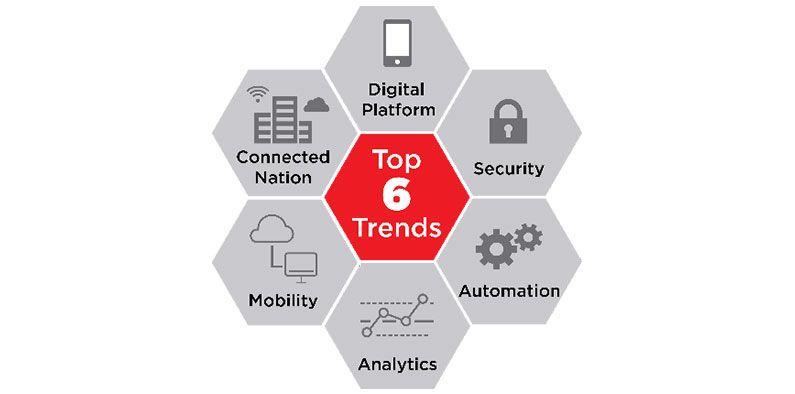Not meeting the mission? Re-architect the network!
- August 26, 2020
- Posted by: opedge
- Category: Uncategorized

“Not Meeting Mission” A common phrase amongst Defense, Homeland Security and Federal Civilian CIOs is that their network and IT services are not meeting the mission demands of the agents, officers and users in the field, nor are they flexible for changing missions, emerging needs and emergencies. They are also facing the challenge of shrinking budgets, as Congress seeks to get back to pre-9/11 levels. Their current architectures consist of siloed, large volumes of data sets with little bandwidth to transport it.
Under these current conditions, agencies struggle with accessing and comparing biometric, biographic or other data to determine if the person(s) that they have encountered is a national security threat. In recent and past hurricanes, oil spills and other disasters, agencies are not able to have full situational awareness at the tactical level on scene or the operational level at their headquarters. They are not able to rapidly expand to collect, exploit and disseminate geospatial imagery or video from aircraft, including unmanned aerial vehicles, to best use available resources in a timely, actionable fashion. This limits the effectiveness of the response and ability to help people or prevent further loss of life and property. After spending billions on expensive platforms such as command centers, tactical vehicles, ships, aircraft and drones, agencies are unable to collect, store and analyze performance information to make efficient and informed maintenance plans.
CIO’s are also coping with the threat of cyber-attacks across a distributed and non-standard cyber terrain. While some legacy federal employees are resistant to cloud usage and disruptive innovation for fear of losing their job, others have led independent system migrations to cloud without access to a broader enterprise architecture, causing de-centralized access, and “cloud sprawl”. With shrinking budgets, technology obsolescence, cyber vulnerabilities, CIOs claim to have “technical debt” and are faced with the need for enterprise wide architectural changes, implemented incrementally.
By leveraging Equinix’ interconnection oriented architecture, government agencies will:
Reach everywhere, interconnect everyone, and integrate everything
In order to transform their mission, Equinix enables government agencies to transform their digital enterprise across all phases of the system lifecycle and elements of a system architecture. This includes the research and development phase, data center optimization, application optimization, hybrid cloud, big data and cybersecurity. By applying the interconnected oriented architecture across the enterprise, government agencies can interconnect people, locations, clouds and data to perform the various missions and services of government.
TRANSFORM THE MISSION
Equinix is the world’s largest, carrier-neutral colocation service provider, operating 145 facilities across 5 continents, in 21 countries and 40 key government and business centers. This allows customers to easily enter new markets with the widest choice of network providers and industry-leading reliability and uptime. Equinix is also the colocation provider to 2700+ cloud, software-as-a-service (SaaS) and managed IT service providers and the world’s leading public cloud service providers, including AWS, Microsoft Azure/Office 365, Google Cloud, IBM SoftLayer and many others. This offers customers the ability to access these services directly, at low cost, with full security and at high bandwidth with assured performance.
Collaboration for government agencies is global, mobile and user-centric. Equinix’ global footprint and dense interconnection to network carriers, cloud service providers and government or business ecosystems will enable collaboration for mission transformation as close to the mission as possible, requiring the minimization of Multi-Protocol Label Switching (MPLS) circuits in favor of direct connect circuits to reduce the distance between the field user and the Digital Edge.
Person and platform-based Mobility at the Digital Edge
Given the aging Federal IT workforce and the need to continually recruit new agents and officers, there is a palpable demand for mobilizing all key data sets for mission execution. Improving mobility is proving to achieve more effective results in law enforcement (e.g. biometrics, intelligence), defense operations, commerce, security and administration, enabling information sharing to the “tactical edge”, where the mission is executed. The demand for global control of unmanned assets (i.e. aerial, surface and subsurface) and the real time exploitation of imagery and signal collection by these platforms require an Interconnected Oriented Architecture (IOA) to meet the performance and resiliency of these intelligence and warfighting assets. The new generation of agents and officers, born in the digital age, expect their key data and will not be able to perform their mission without it. Agencies will have difficulty retaining their entry level workforce without user friendly mobile data. Instead, agencies can provide the access to digital platforms, mobility services, analytics, automation and security for a connected nation. Designing interconnection first into a government architecture allows collaboration and information sharing needed at the Digital Edge to be moved to the tactical edge of mission operations.
Reference Link: https://www.equinix.com/digital-edge/solutions/federal-government/
